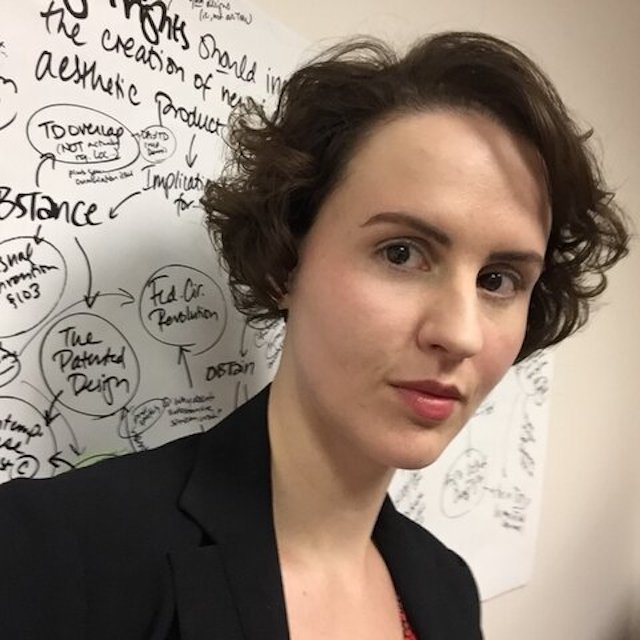According to conventional wisdom, fair use factor two plays a minor role, if any, in copyright cases. But, as Cathay Smith shows in Political Fair Use, this factor plays a major role—and may even be dispositive—in cases involving “political uses” of copyright-protected works. Through a series of case studies, Smith “identifies a pattern in political fair use decisions: in disputes arising from the unauthorized political uses of copyrighted works, courts appear to implicitly modify their analyses and balancing of the fair use factors under section 107 of the Copyright Act.”
Fair use is a fact-intensive, case-by-case inquiry. The Copyright Act sets forth four factors that courts should weigh in determining whether a use of parts or all of another author’s work is fair:
- the purpose and character of the use, including whether such use is of a commercial nature or is for nonprofit educational purposes;
- the nature of the copyrighted work;
- the amount and substantiality of the portion used in relation to the copyrighted work as a whole; and
- the effect of the use upon the potential market for or value of the copyrighted work.
When considering factor two, courts often consider the extent to which a work embodies creative expression or is more informational or functional in character. Some types of works are deemed closer to the “heart” of copyright. Accordingly, the use of a creative work is less likely to be fair than the use of an informational one. In the standard fair use case, factor two tends to play a minor (if any) role; factors one and four are generally the most important.
Smith argues that the “political use” cases are different. She defines a “political use” as “the use of original copyrighted works by politicians or about politicians.” This “occurs when a politician or political candidate uses another’s creative expression to express political speech or when a person or party uses another’s creative expression to speak about a politician or candidate.” So defined, use of the “Success Kid” meme by Rep. Steve King’s campaign would be a political use, but Infowars’ use of the character Pepe the Frog (a use not connected to any particular politician or candidate) would not.
Smith observes that in political use cases, factor two “seems to exert an outsized influence on the determination of all four fair use factors.” Specifically, when the underlying works are political—e.g., in cases dealing with photographs of a candidate or music created for a political ad—courts deem those works to “informational” and thus the use is more likely to be fair. And where the underlying work is political and the defendant’s use is also political, the defendant is “overwhelmingly” likely to win on the ultimate question of fair use. Consider, for example, a situation in which a photo taken of a political candidate at a political rally is used in an adversary’s political advertisement. These types of political uses (we might perhaps think of them as “nominative political uses”) seem to be being treated as almost presumptively fair.
Not only does Smith’s article challenge the conventional wisdom about fair use factor two, it also delves into larger questions about the purpose of copyright. Smith posits that, when it comes to other political uses (we might think of them as “distasteful political uses”), courts engage in the adaptation of fair use analysis “in order to both accommodate the import of political speech and to respect copyright owners’ dignity and rights to control objectionable uses of their expressive works.” For example, in the “Success Kid” case, the court ruled for the copyright owner—and against fair use—where the original work was not political in nature and where the copyright owner (the child’s mother) was strongly opposed to Steve King’s political positions and didn’t want the meme associated with him. Of course, at least in the United States and as Smith notes, we don’t generally think of copyright as a regime that is meant to protect authorial dignity or allow authors to veto uses just because they don’t like them. If it’s true that courts are providing some kind droits morals in political use cases, that is notable in and of itself.
Smith’s article also revisits the well-known tension between copyright and the First Amendment. In Eldred v. Ashcroft, the Supreme Court suggested that the fair use doctrine internalized First Amendment values in copyright law. See 537 U.S. 186, 221 (2003). The pattern of fair use cases Smith identifies may be seen as an encouraging sign that fair use is flexibly adapting to core political speech. But Smith expresses concern that, at least in some cases, courts may actually be applying the fair use framework too rigidly: “Political fair use appears overinclusive in certain scenarios when it fails to account for the privacy, dignity, or economic interests of creators of works that happen to embody a political nature and underinclusive in other scenarios in which concerns for the dignity rights of a creator seem to override common applications of parody, transformativeness, and fair use.” In either case, Smith’s article adds an important new facet to this discussion as well.








